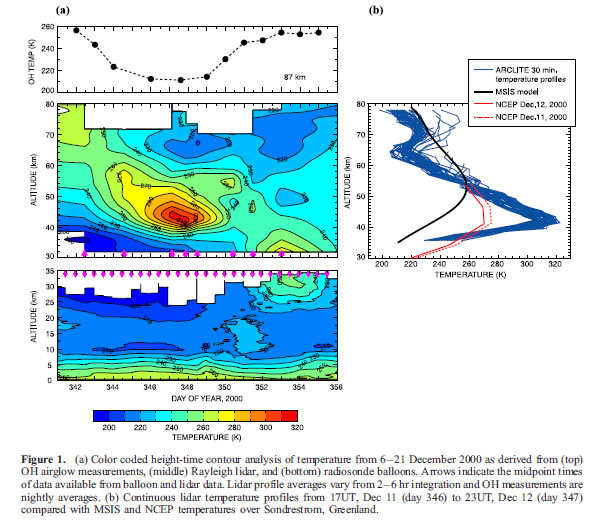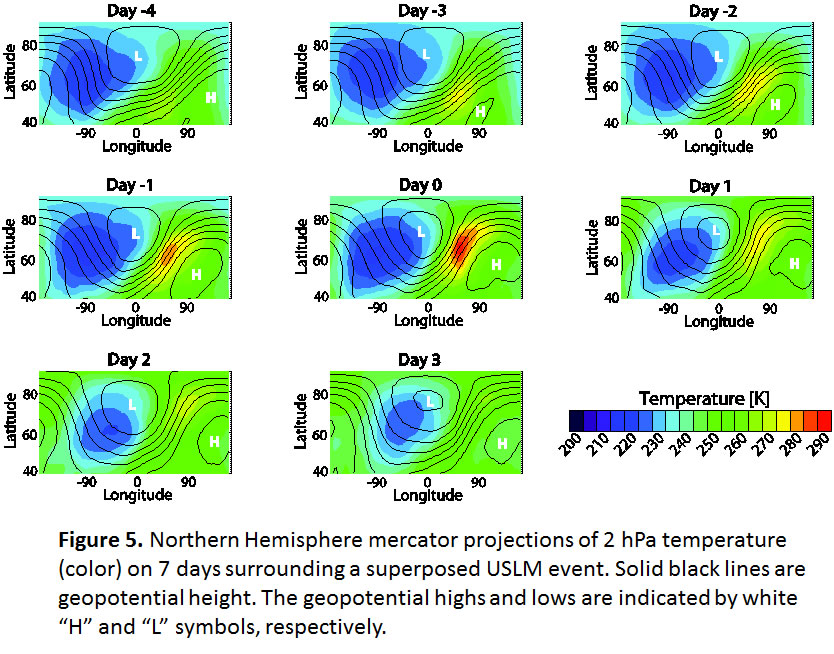Thayer Research Group
|
|
Group Updates
|
| Geophysical Fluid Dynamics |
|
NSF CEDAR Study of Baroclinic Zones in the Polar Winter Middle Atmosphere: A research program to investigate vertical coupling in the wintertime polar regions between the stratosphere and mesosphere. The CEDAR program considers coupling from the lower atmosphere to the upper atmosphere a primary objective. Polar wintertime mesosphere can be significantly disturbed during strong baroclinic conditions in the stratosphere. A discovery from preliminary research is the regional formation of a separated polar mesopause near 75 km in addition to the nominal wintertime mesopause found at 100 km. These thermal disturbances are not traditional signatures of a major stratospheric warming, but are associated with synoptic-scale disturbances that lie between the boundaries of the polar wintertime cyclonic vortex and the quasi-stationary Aleutian anticyclone. The primary question to be addressed is How does the baroclinic state of the polar wintertime middle atmosphere affect the thermal structure of the mesosphere? Thayer, J. P., and J. M. Livingston, Observations of wintertime arctic mesosphere cooling associated with stratosphere baroclinic zones, Geophys. Res. Lett., 35, L18803, doi:10.1029/2008GL034955, 2008.
Thayer, J. P., K. Greer, and V. L. Harvey (2010), Front-like behavior in the Arctic wintertime upper stratosphere and lower mesosphere, J. Geophys. Res., 115, doi:10.1029/2010JD014278.
|



